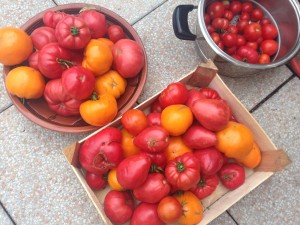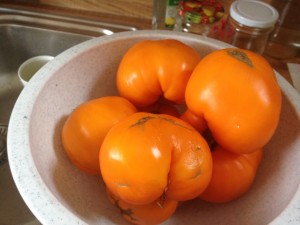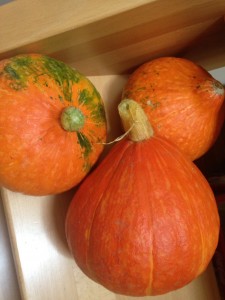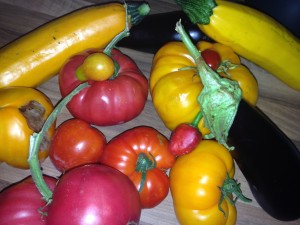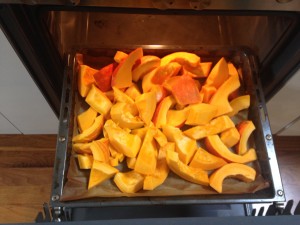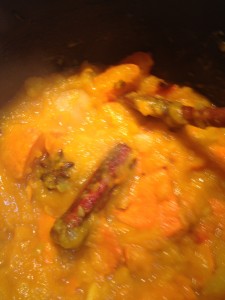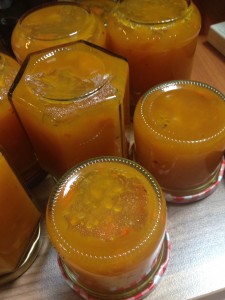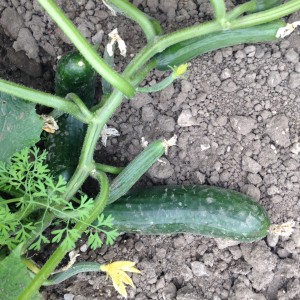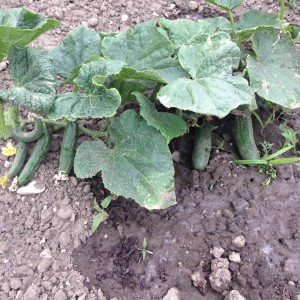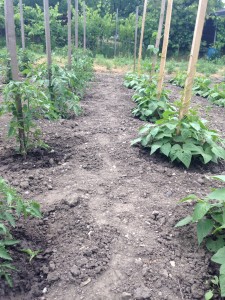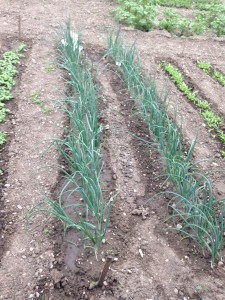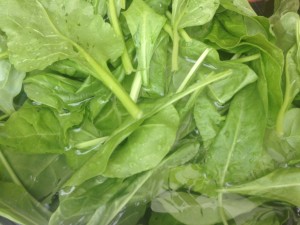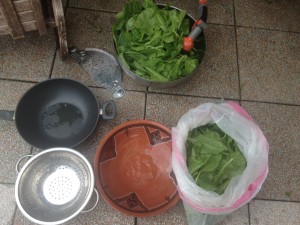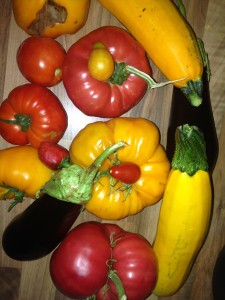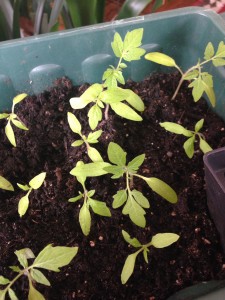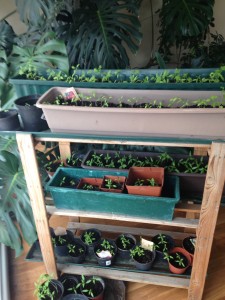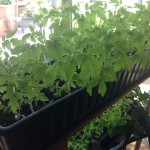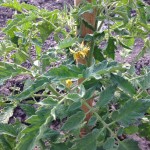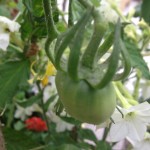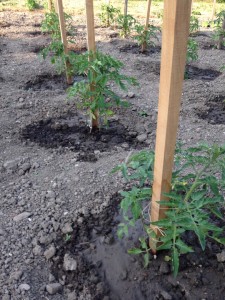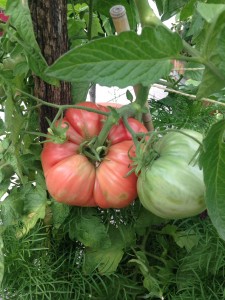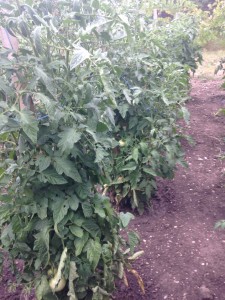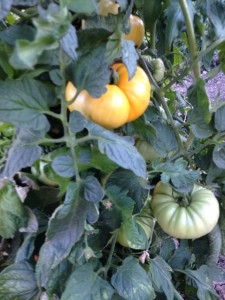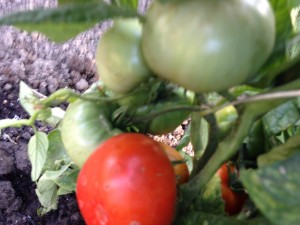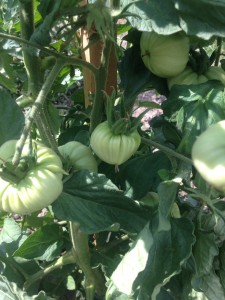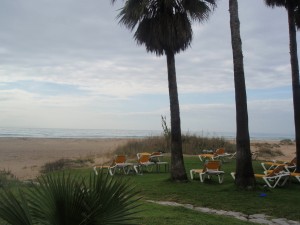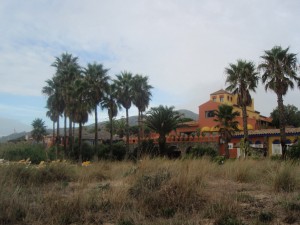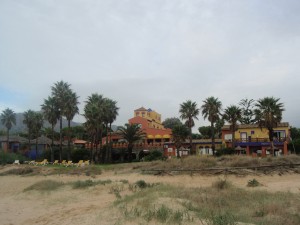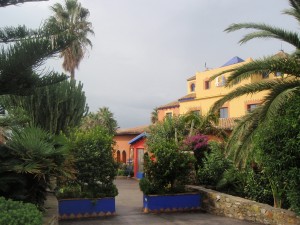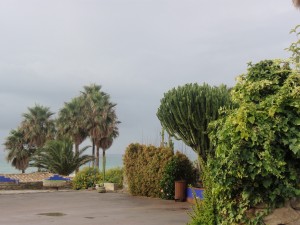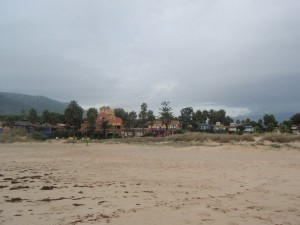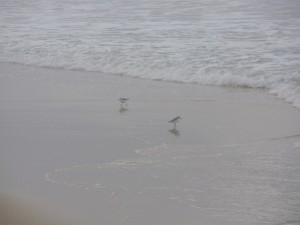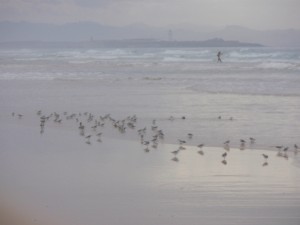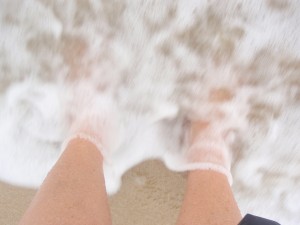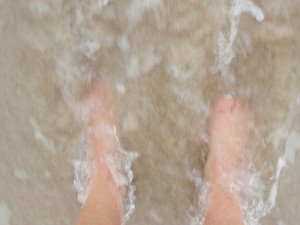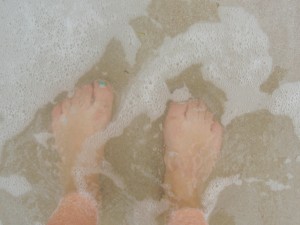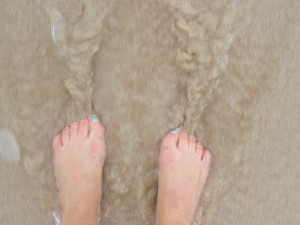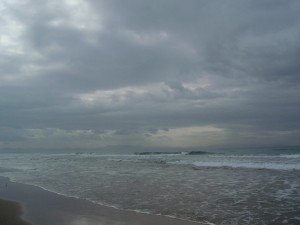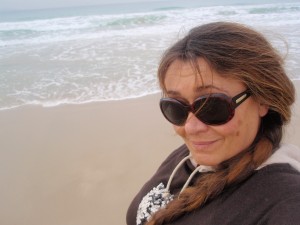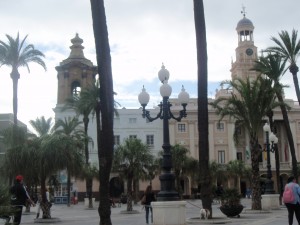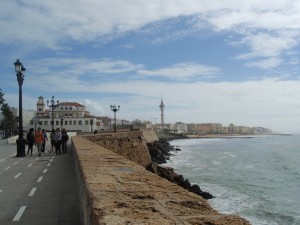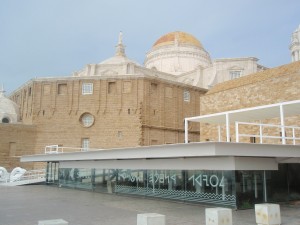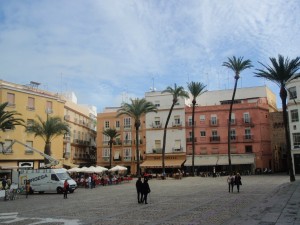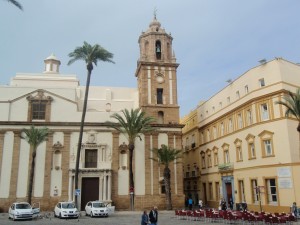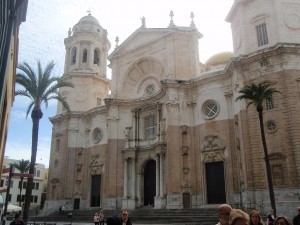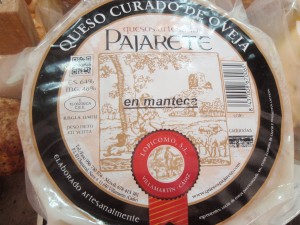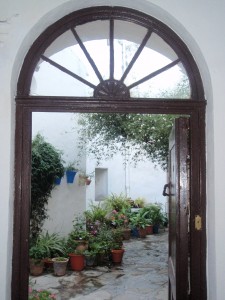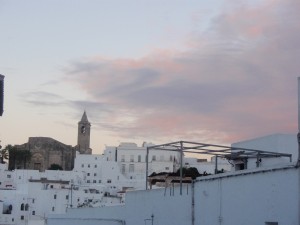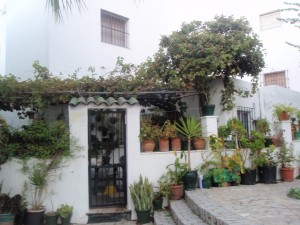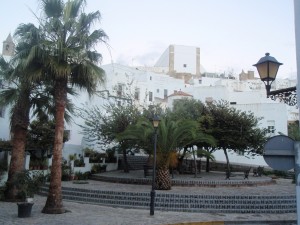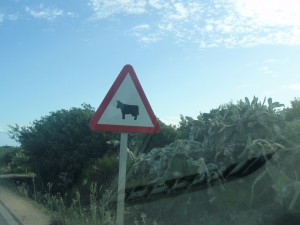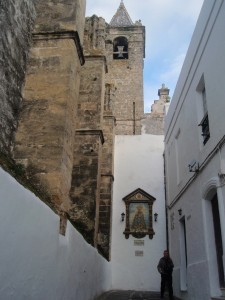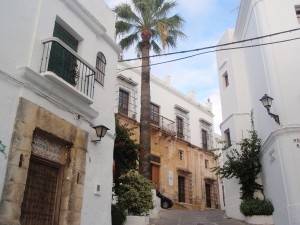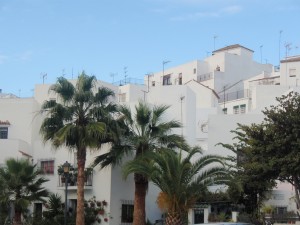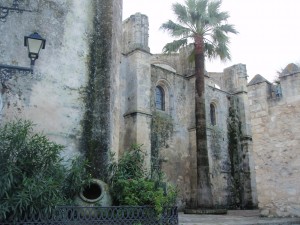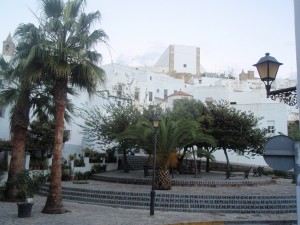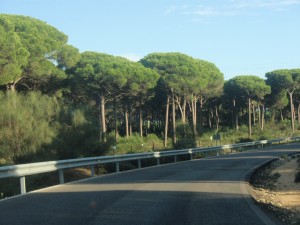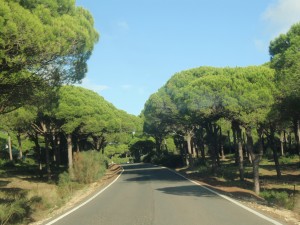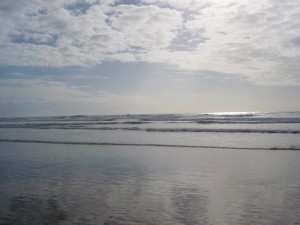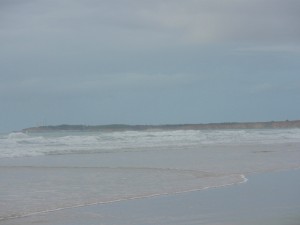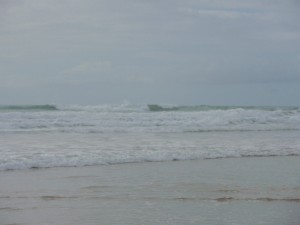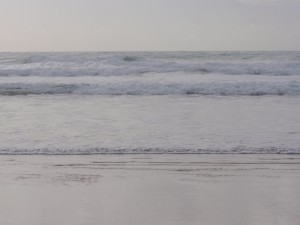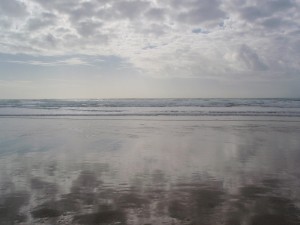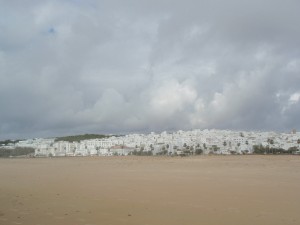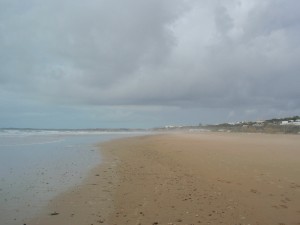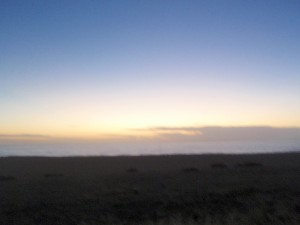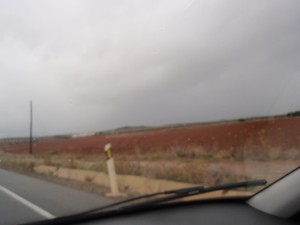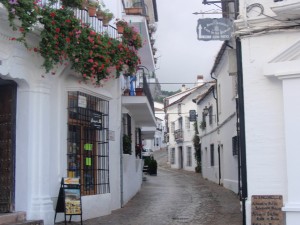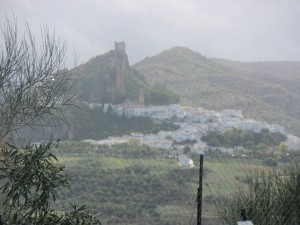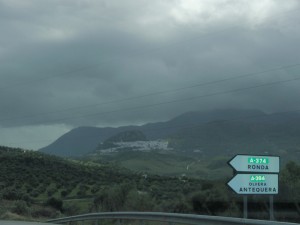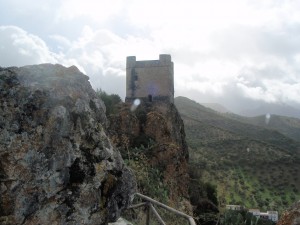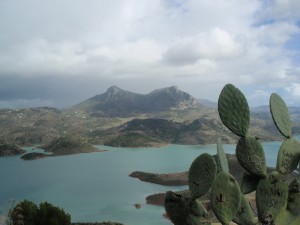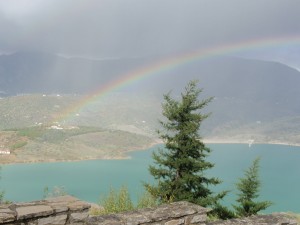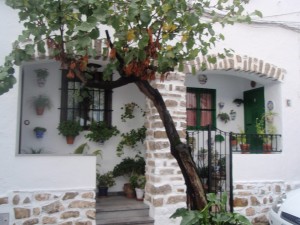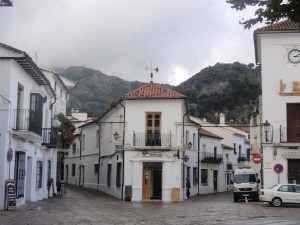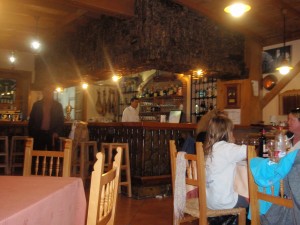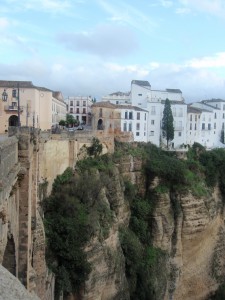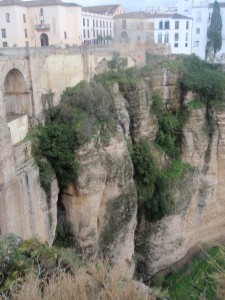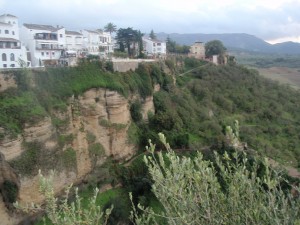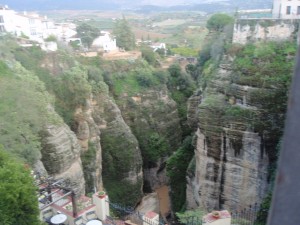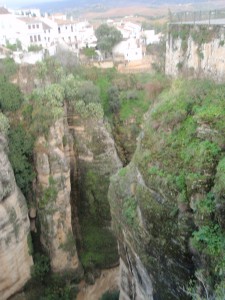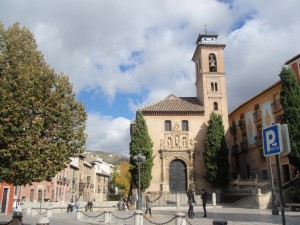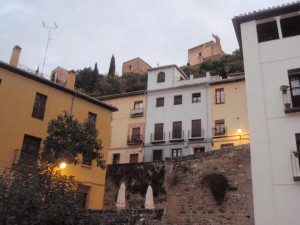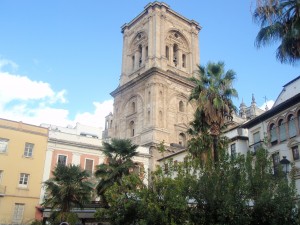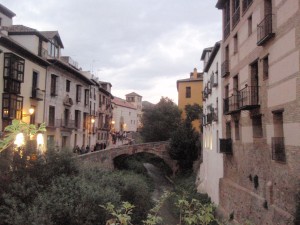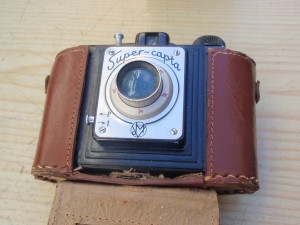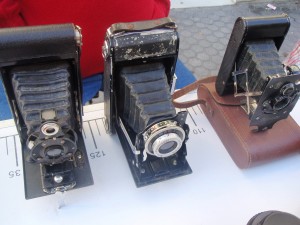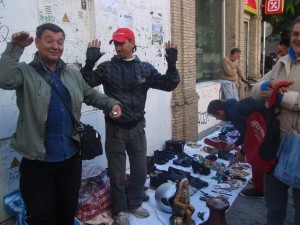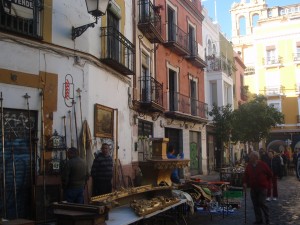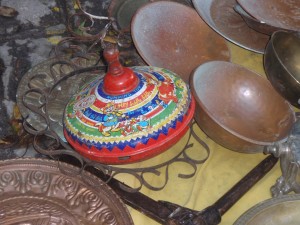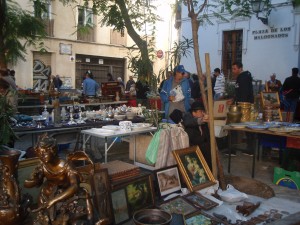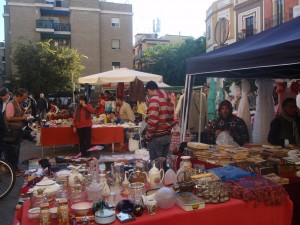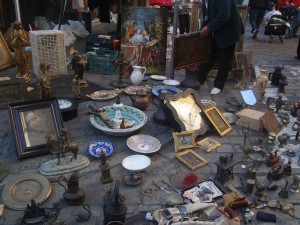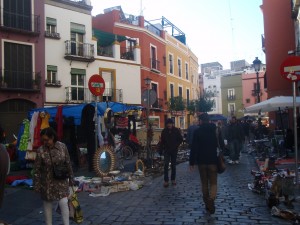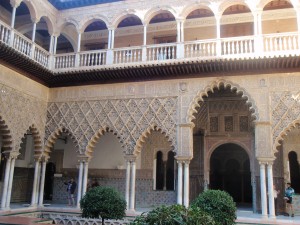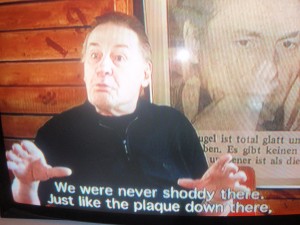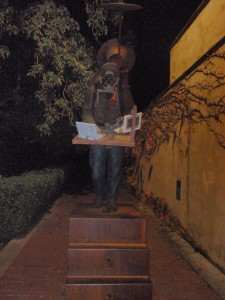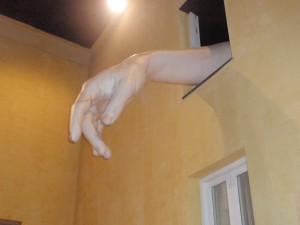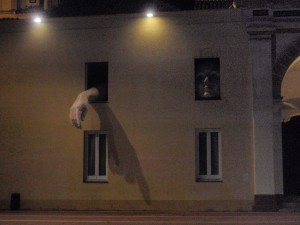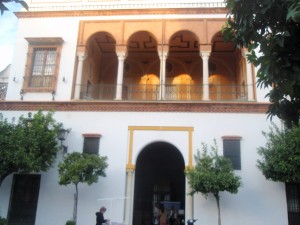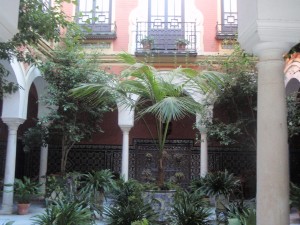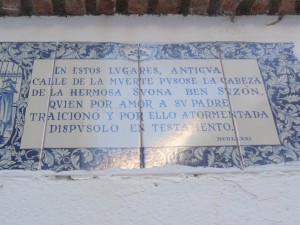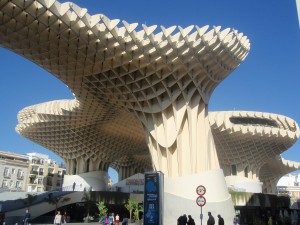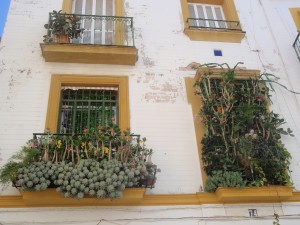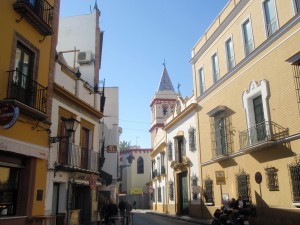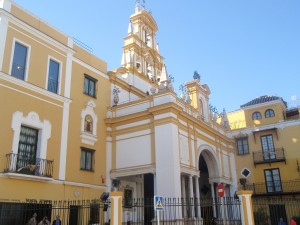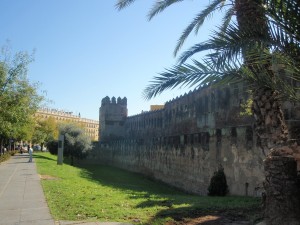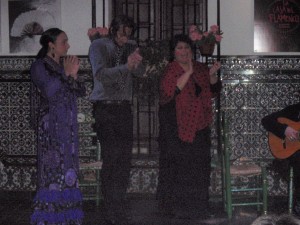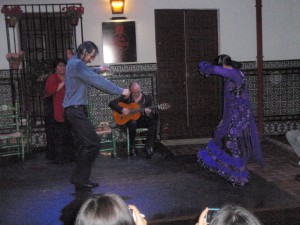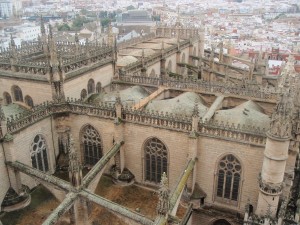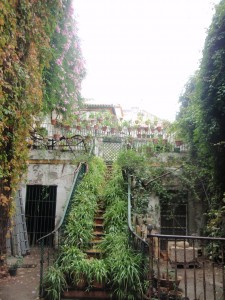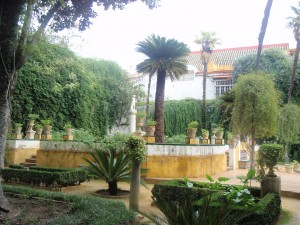Welch eine Stadt! Viel kleiner als Sevilla, nicht so laut, aber um nichts weniger Menschen, die durch die Strassen schlängeln. Zufällig „auf den Bus“ gekommen, als ich dem Gespräch von zwei Mexikanern lauschte, begann ich als bereits voll durchtrainierter Tourist die Stadt mit einer Busbesichtigung, die sich hernach als sehr sinnvoll erwies. Leicht erfass- und überschaubar konnte ich mir nach der Tour die Route durch die Innenstadt, die Judaria, rasch zurechtlegen.
Durch die weißgekalkten Strassen und die farbenfrohen und blumengeschmückten Innenhöfe führte mich mein Weg direkt zur Moschee – oder Kathedrale, wie sie heute genutzt wird. Das wohl imposanteste Gebäude der bisherigen Reise! Diese wunderbare arabische Architektur ist in weiten Bereichen sehr gut erhalten. Sehr leicht und überschaubar wirkt diese für 15.000 Menschen entworfene und über 1000 Jahre alte Moschee. Auf dem Boden einer westgotischen Kirche, die die Uymayaden der Lokalbevölkerung abkauften (! Entsinne mich nicht, wann das die Christen mit Andergläubigen getan hätten), platzierten sie Ihr anfängliches Bauwerk unter Nutzung bestehender Gebäudeteile. Der zunehmende Reichtum liess das Bauwerk immer größer werden.
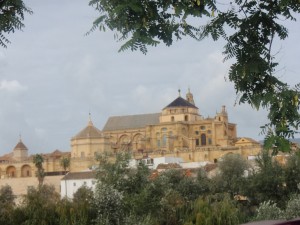
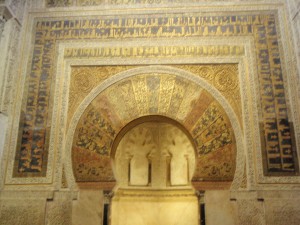


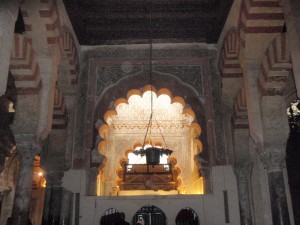

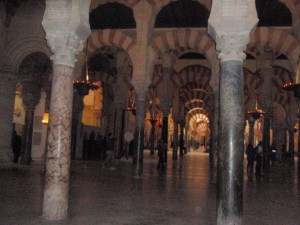
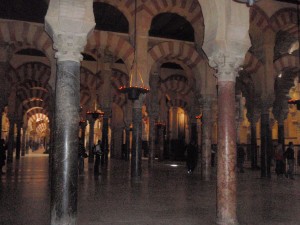
Die muslimische Phase steht aber auch für Gelehrsamtkeit, Freizügigkeit im Glauben und Wohlstand der Allgemeinheit, was einen Bevölkerungsanstieg von bis zu angeblich 1 Million Menschen (Anmkg. Heute 300.000 Einwohner) zur Folge hatte. Angeblich war Cordoba in der Kalifenzeit die größte Stadt der damals bekannten Welt. Nach der Eroberung durch die katholischen Könige erging es weder Arabern noch Juden besonders gut, was letztlich in der Vertreibung der beiden Religionsgruppen führte (auch der Konvertiten). Außerdem „vergingen“ sich die christlichen Glaubenshüter an der Moschee, in dem sie im 16. Jh eine Renaissancekirche „einpflanzten“. Diese wäre sogar eine bezaubernde Kirche, würde sie irgendwo abseits alleine stehen. Aber so in der Anlage integriert, wirkt sie als Fremdkörper und gänzlich unpassend.
Die Düfte, die aus den vielen Tabernas und Restaurants durch die engen Gassen Ihren Weg in meine Nasen finden, liessen mich sodann auch in eine Markthalle verschiedener Gerichte eintauchen. Alles gab es hier nach Herzenslust, aber meine arabische Seele aus einem früheren Leben (oder Nostalgie nach Marokko) liessen mich dann eine leckere Lammtahin verspeisen, die ich genoss, während eine wohlbeleibte Flamencosängerin sich die Seele aus dem Leib sang, um ihren dünnen Harung, der um sie herumtänzelte, zu gewinnen. Die Annahme des Mindestgewichts für Sängerinnen mag wohl doch ihre Richtigkeit haben .
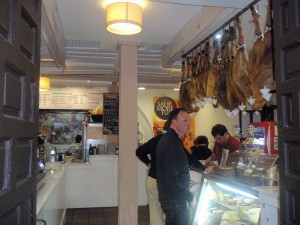
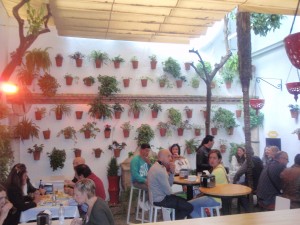

So, wenn wir schon beim Essen sind – ich mache vorerst Schluss – der Hunger treibt mich in die Stadt. Übrigens, wie ich eben der Wettervorhersage entnehme, erwarten mich morgen resche 12 Grad 
Mein Versuch, gestern noch etwas essbares zu ergattern, wäre fast am strömenden Regen gescheitert, da die sich rasant ausbreitenden Wasserlacken und das heftige Plätschern die Motivation für einen nächtlichen Spaziergang schwinden liessen. Mein Hunger überzeugte mich allerdings von der Notwendigkeit, das Hotel nochmals zu verlassen, auch wenn ich Gefahr lief, mir platschnasse Füsse zu holen. Nun konnte ich allerdings meinen neuen Knirpsschirm ausführen, den ich in Sevilla für teures Geld erstanden hatte, weswegen ich mir schon Vorwürfe machte, da gleich nach dem Kauf prächtigster Sonnenschein die Stadt erhellte. Der kurze Weg in die Markthalle im gegenüberliegenden Park hinterließ kaltnasse Spuren an mir. Die Halle selbst war gerammelt voll, immens laut und roch nach allen möglichen Speisen, deren Preise allerdings auch ziemlich würzig anmuteten. So kostete etwa 1 kg von einem zugegeben köstlichen Schinkenspeck (jene endlos langen Schweinshaxen, die verschiedenerorts in den Lokalen herumhängen) EUR 77! Das nenne ich doch einen ganz stolzen Preis. Auch der cordobanische Käse stand diesem um nichts nach.
Wenn man mit Hunger im Bauch bestellt, neigt man meist zu Übertreibungen, und vor allem ich: Die Käseplatte und die halbe Schinkenportion waren mir letztlich auch ohne Brot, das angeblich nicht mehr verfügbar war, doch zu viel. Der hervorragende Geschmack änderte nichts an den Folgen eines mulmigen Gefühls im Magen und einer furchtbaren Körperschwere, die mir das Einschlafen hernach schwierig machten. Heute Morgen war das Gefühl allerdings weg und es war Platz für eine köstliche Cremetarte mit Kaffee
Noch einige Photos von den blumenbehangenen Wänden Cordobas… und einiges mehr!

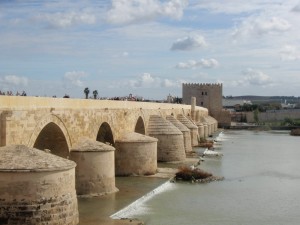
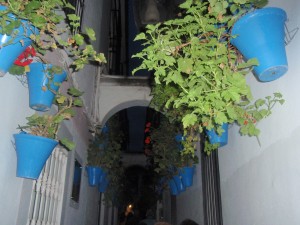
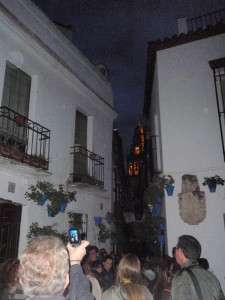
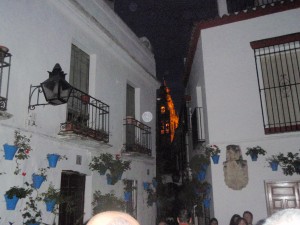
Ein lobendes Wort muss ich der spanischen Bahn widmen – von wegen im Süden Europas hätte die Bahn immer Verspätung. Bestens organisierte, saubere und große Bahnhöfe, transparente und klare Möglichkeit der Ticketbestellung über Internet und äußerst pünktliche Züge zeichnen die spanische ÖBB, RENEF, aus. Ich bin mir nicht ganz sicher, ob das auch für unsere Bahn gilt, wenn ich mich da an Andrija´s Beschwerde erinnere, dass die österreichischen Züge jeden zweiten Tag zum Teil beträchtliche Verspätungen verzeichnen – und dies allein auf der Relation Mödling – Wien. Die meisten Züge sind hoch modern, aber selbst die etwas älteren Modelle, sind sauber und bestens ausgestattet – Radio, Steckdosen und TV!
Ich möchte auch ein wenig über meine spärliche Erfahrung mit Spaniern während meiner Reise erzählen, was sich in Hinblick auf die noch bevorstehende Tour allerdings noch ändern kann. Die Spanier sind, um es genau zu sagen und auf den Punkt zu bringen und ohne weitere Hilfswörter oder komplizierte Umschreibungen zu verwenden, Spanier und als solche ihrer Sprache und ihrem Land verschrieben. Sie lieben es offensichtlich viel zu reden, sodass es oft eigenartig erscheint, dass sie es zwischen den Sätzen noch schaffen zu atmen. Die Sätze scheinen aus einem einzigen Wort zu bestehen, da kaum Lücken oder Pausen zu hören sind. Die Millionen an Touristen aus dem Ausland scheinen sie nicht wahrzunehmen, denn bei fast jedem meiner Versuche, mich auf Englisch verständlich zu machen, sehen sie mich derart erstaunt an, als erführen sie erstmals, dass auf der Welt auch andere Sprachen als das Spanische gesprochen werden. Dieses Schockerlebnis dauert allerdings nur einen Bruchteil einer Sekunde, bleibt dem aufmerksamen Beobachter aber dennoch nicht verborgen, ehe sie dann wieder in ungebrochener Geschwindigkeit weiterreden, in der sichtlichen Bemühung, mir weiterzuhelfen und in der Hoffnung, dass, wenn sie nur viel und schnell genug reden, ich dennoch den Sinn ihrer Worte erhaschen könnte. Man spürt daraus keine Ignoranz oder Überheblichkeit, sondern schlicht die Tatsache, sich selbst mit der eigenen Sprache zu genügen. Sie sind allerdings in der Art liebenswürdig und hilfsbereit und wenn die Hilfeleistung sprachlich nicht funktioniert, so packen sie einen an der Hand und schieben dich in die richtige Richtung, so denn die Frage korrekt verstanden wurde. Dieser Umstand zwingt mich allerdings meine Ohren für das Spanische zu schärfen und so gelang es mir, zumindest 80 % der Führung in Cordoba auf Spanisch aufzunehmen. Den Rest oder Unklarheiten erklärte mir die hübsche Fatima dann auf Englisch, aber es schien ihr nicht unangenehm zu sein, derart die Dauer der Erläuterungen zu verkürzen, zumal ich der einzige ausländische Teilnehmer der Führung war.
Es gibt kaum dicke Spanier auf den Strassen – zumindest in Sevilla und Cordoba. ich denke, ich habe auch die Erklärung hierfür gefunden. Die Gehsteige sind derart schmal, dass Menschen mit 1.8 m Höhe ein maximales Gewicht von 70 kg aufweisen können, um nicht einerseits ein Auto und gleichzeitig das Wohnhaus zu rammen. Zwei Menschen können unmöglich aneinander vorbei, ohne einen davon auf die STrasse zu schubsen. In Granada hingegen, wo die Gesteige ebenfalls weit ausladend barock errichtet wurden, zeigen sich zumindest auch die Damen in barocker Bestückung!
In Cordoba fand ich, hatten die Menschen einen starken arabischen Einschlag, weit mehr als in Sevilla, mal abgesehen von meinem englischsprechenden Rezeptionisten im Hotel, der unverkennbar chinesischer Abstammung war. Das kann natürlich ein subjektives Empfinden sein, aber irgendwie erschienen sie mir dunkler, die Gesichtszüge ausgeprägter und das Gehabe temperamentvoller. Interessant ist auch, dass die Mehrzahl der Touristen Spanier sind. Das mag daran liegen, dass abseits der Hauptsaison und in Vermeidung von ausschwärmenden Touristenmassen, die Spanier die Gelegenheit nutzen, ihr Land kennenzulernen. Wahrscheinlich mag aber auch die brütende Hitze die Einheimischen von einer Besichtigung Andalusiens in den Sommermonaten fernhalten.
Heute Morgen schlenderte ich noch durch die sonnendurchflutete Altstadt Cordobas, die sich ungewohnt menschenleer präsentierte, so als schliefe die Stadt selbst auch noch. In „meiner“ Konditorei, die einem wunderschönen Riad-Hotel angeschlossen ist, auf der Flussseite der Mezquita, nahm ich mein Frühstück ein und liess mir die Sonne auf die Nase scheinen. Ich muss mich wärmen, denn Granada in den Bergen verfügt über ein weitaus kühleres Klima. Das war schon den Habsburgern bekannt, die die heissen Sommermonate immer dort, hoch oben auf der Alhambra verbrachten. Nun sitze ich im Zug nach Granada. Schön langsam bauen sich die Berge des spanischen Binnenlandes auf und endlose Olivenhaine zieren den Weg der Bahngleise. Eine Erhebung auf halbem Wege zwischen Cordoba und Granada erinnerte an einen liegenden Römer, mit flacher Stirn und edel gebogener Nase. Die Geschwindigkeit des Zuges und vor allem jener der entgegenkommenden verursachen ein peitschendes Geräusch, wenn zwei Züge aneinander vorbeihuschen.
